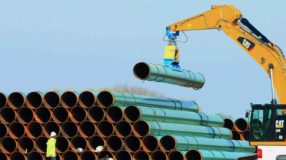Don Santa, president and CEO of the Interstate Natural Gas Association of America, today released the following statement on the Obama administration’s blueprint to reduce methane emissions:
“Given the high-level nature of the administration’s methane blueprint, INGAA reserves judgment on the plan until it sees more details.
“Still, many of the actions INGAA already has initiated seem consistent with the direction of the administration’s proposal. For example, INGAA members last year committed to develop industry guidelines for Directed Inspection and Maintenance of natural gas pipeline facilities. DI&M is a well-established and EPA-recognized tool for detecting and mitigating leaks in a cost-effective manner. While most INGAA member pipeline companies use DI&M, the guidelines will improve consistency and uniformity, which should result in further emissions reductions. This appears consistent with the administration’s call for voluntary, collaborative action to reduce emissions.
“INGAA also is working with research groups to create a roadmap for developing technological innovations to make DI&M even more effective. And, it is working on research to reduce the need to blow down – or release gas from the pipeline – when conducting inspection and maintenance. This could become increasingly important when the federal pipeline regulatory releases long-awaited natural gas transmission safety rules. Again, this appears consistent with the blueprint’s desire for research and development.
“It is important to note that INGAA members have made great strides already in reducing methane releases. The natural gas transmission industry reduced the number of leaks along the pipe by 94 percent, preventing 122 million metric tons of CO2-equivalent emissions over the past three decades, as a result of pipeline integrity and maintenance programs and continued investment in new pipeline facilities. These prevented emissions are equivalent to removing more than 25 million passenger vehicles from the road for one year. Members are committed to go even further by establishing guidelines to reduce emissions from pipeline equipment, with a particular focus on the types of equipment with the largest emissions profile.”







